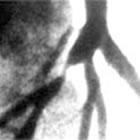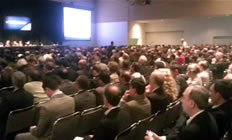 Forgive the perverse Shakespearean pun in the title but, as the Bard wrote: “What’s in a name? That which we call a rose by any other name would smell as sweet.” My topic is pretty much the polar opposite of roses, but the whole concept of labels and what we call things has become increasingly important. It’s one that I touched on in my post over last weekend about the impending CMS audits of stent procedures: namely, that the “official” terms used to describe treatment of a blocked artery are flawed when it comes to proper use of the English language.
Forgive the perverse Shakespearean pun in the title but, as the Bard wrote: “What’s in a name? That which we call a rose by any other name would smell as sweet.” My topic is pretty much the polar opposite of roses, but the whole concept of labels and what we call things has become increasingly important. It’s one that I touched on in my post over last weekend about the impending CMS audits of stent procedures: namely, that the “official” terms used to describe treatment of a blocked artery are flawed when it comes to proper use of the English language.
The official “Appropriate Use Guidelines” place stent and angioplasty procedures into three categories: Appropriate, Uncertain and Inappropriate. Any patient, potential patient or, for that matter, anyone not steeped in the minutiae of interventional cardiology, would look at those terms and assume that any doctor putting a metal coil into someone’s heart when the procedure was labeled “uncertain” or “inappropriate” should be fined or fired or both. Continue reading

 The question of the day, regarding whether or not to stent a coronary artery, is now being brought to the forefront by the U.S. government in the form of a
The question of the day, regarding whether or not to stent a coronary artery, is now being brought to the forefront by the U.S. government in the form of a 
 Call it an accordian, a concertina or a “squeezebox”…but don’t call it a stent. Because one thing that is not music to your ears is a coronary stent that you have carefully placed to relieve your patient’s symptoms — and which then gets shorter or longer when you push or pull another catheter, balloon or wire through it.
Call it an accordian, a concertina or a “squeezebox”…but don’t call it a stent. Because one thing that is not music to your ears is a coronary stent that you have carefully placed to relieve your patient’s symptoms — and which then gets shorter or longer when you push or pull another catheter, balloon or wire through it. For several years now, I’ve been advocating for expanded use of functional measurement, otherwise known as
For several years now, I’ve been advocating for expanded use of functional measurement, otherwise known as  While a number of the 12,000 attendees started leaving and catching planes to their home bases all over the world yesterday, some to Florida for the beginning of yet another major heart meeting, the AHA, and some who will be off next week to the Veith Symposium in New York, the real evidence that TCT is over for the year is this view of the Exhibit Area, taken moments ago: rugs rolled up, fork lifts rolling forward, hi-tech exhibits slid into wooden framed crates….
While a number of the 12,000 attendees started leaving and catching planes to their home bases all over the world yesterday, some to Florida for the beginning of yet another major heart meeting, the AHA, and some who will be off next week to the Veith Symposium in New York, the real evidence that TCT is over for the year is this view of the Exhibit Area, taken moments ago: rugs rolled up, fork lifts rolling forward, hi-tech exhibits slid into wooden framed crates….


